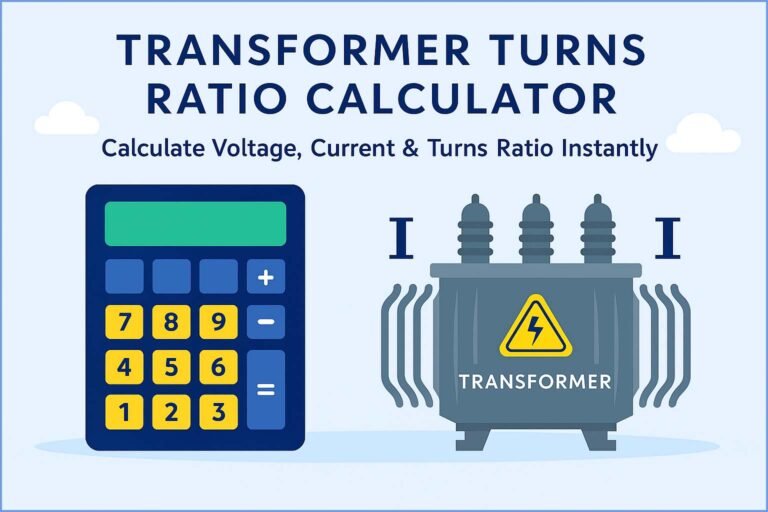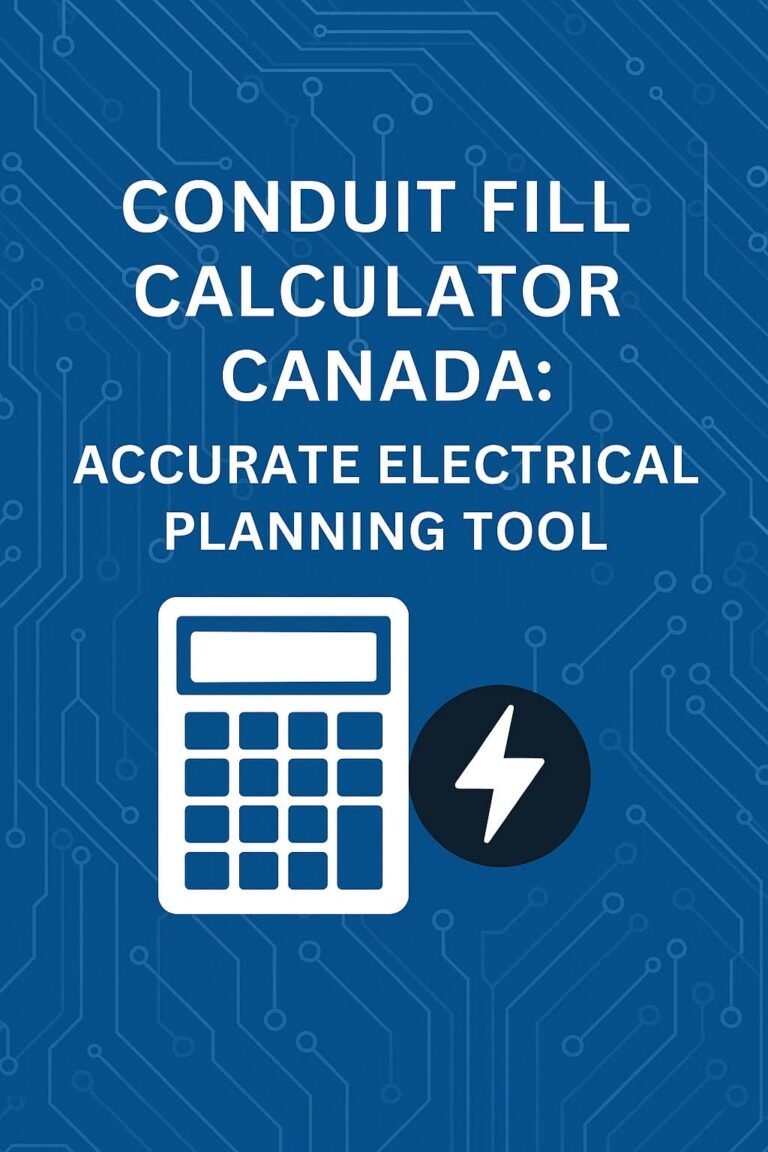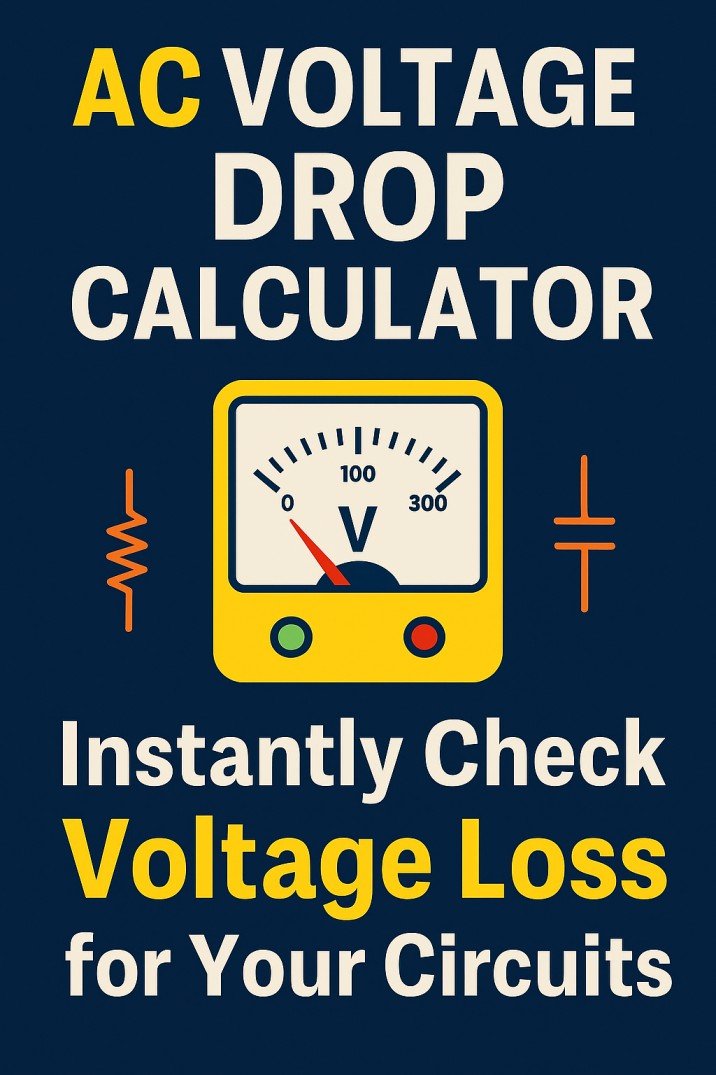Electricity Load Calculator in kVA – Accurate Power Load Estimation for Homes & Industries
Understanding your electrical load is essential for safe and efficient power management. Whether you are planning a new installation, upgrading an existing setup, or sizing a generator, using an electricity load calculator in kVA helps you find the total apparent power your system requires. This simple yet powerful tool converts your connected load into kVA, which is the standard unit used for transformer, generator, and UPS sizing.

Table of Contents
What is an Electricity Load Calculator in kVA
An electricity load calculator in kVA is a practical tool used to determine the total electrical demand of all appliances and machines in a system. It helps homeowners, engineers, and businesses calculate the apparent power required to run all loads efficiently. The calculator considers both active power (in kilowatts) and reactive power, which together form apparent power (in kVA).
Every electrical device consumes active power, which does real work like lighting or heating. However, motors and other inductive loads also create reactive power, which affects the overall system performance. The kVA rating shows the total load, including both components, ensuring you choose the right equipment to handle the complete electrical demand.
Electricity Load Calculator (kVA)
Electricity Load Calculator (kVA)
Estimate total electrical load in kilovolt-amperes (kVA) based on connected wattage, voltage, and power factor.
Use our online tool Creepage Distance Calculator – Calculate Safe Insulation & Clearance for PCB and High Voltage Design
Why You Need an Electricity Load Calculator in kVA
If you plan to install a generator, transformer, or backup power system, using an electricity load calculator in kVA prevents under-sizing or over-sizing. A system too small will trip frequently, while an oversized one wastes energy and costs more.
By accurately calculating the kVA, you can:
- Select the correct generator capacity
- Size your UPS or inverter correctly
- Design an efficient distribution system
- Estimate energy requirements for residential, commercial, or industrial use
- Avoid power loss and voltage drops
In short, it ensures your electrical infrastructure is safe, efficient, and cost-effective.
Basic Formula for kVA Calculation
To understand how an electricity load calculator in kVA works, you must know the basic conversion formula between kilowatts (kW) and kilovolt-amperes (kVA):
kVA = kW ÷ Power Factor
The power factor (PF) is a number between 0 and 1 that indicates efficiency. Most homes and offices have a power factor between 0.8 and 0.9. For example, if your total load is 10 kW and your power factor is 0.8:
kVA = 10 ÷ 0.8 = 12.5 kVA
So, you need a generator or power source of at least 12.5 kVA to handle a 10 kW load efficiently.
Sample Table for Common Loads
Below is a sample reference showing how to calculate total load and convert it to kVA:
| Appliance | Quantity | Power (W) | Total Power (W) | Power Factor | Load (kVA) |
|---|---|---|---|---|---|
| LED Lights | 20 | 15 | 300 | 1.0 | 0.3 |
| Fans | 10 | 80 | 800 | 0.8 | 1.0 |
| Air Conditioners | 3 | 1500 | 4500 | 0.85 | 5.3 |
| Refrigerator | 1 | 400 | 400 | 0.85 | 0.47 |
| Water Pump | 1 | 750 | 750 | 0.8 | 0.94 |
| Total | – | – | 6750 W (6.75 kW) | – | 8.5 kVA |
From the table, the total electrical load is 8.5 kVA. You can now select a 9 kVA or 10 kVA generator to ensure reliable operation.
Understanding Power Factor in Load Calculation
Power factor plays a key role in converting kW to kVA. It represents the ratio of real power to apparent power. A power factor of 1 means all the energy is converted to useful work, while a lower power factor means some energy is lost in the form of reactive power.
Different types of loads have different power factors:
- Resistive loads like heaters or lights: PF = 1.0
- Inductive loads like motors or compressors: PF = 0.8 – 0.9
- Mixed loads in offices or homes: PF = 0.85
So, when you use an electricity load calculator in kVA, always input a realistic power factor depending on the type of load you are calculating for.
Use our online tool DC Circuit Breaker Sizing Calculator – Accurate Tool for DC Load Protection
Steps to Use an Electricity Load Calculator in kVA
Using an online or manual electricity load calculator in kVA is simple. Here’s how:
- List all electrical appliances or equipment you intend to use.
- Note their rated power in watts or kilowatts.
- Multiply each by the quantity.
- Add up the total load in watts or kilowatts.
- Estimate the average power factor of your system.
- Use the formula kVA = kW ÷ Power Factor.
This gives you the total load requirement in kVA.
For instance, if your home consumes 8 kW of power and the power factor is 0.85, the load is:
8 ÷ 0.85 = 9.41 kVA
That means a 10 kVA generator or inverter will be suitable.
Difference Between kW and kVA
While both kW and kVA measure electrical power, they represent different aspects.
| Parameter | kW (Kilowatt) | kVA (Kilovolt-Ampere) |
|---|---|---|
| Type of Power | Real Power | Apparent Power |
| Includes Reactive Power | No | Yes |
| Formula | kW = kVA × PF | kVA = kW ÷ PF |
| Used For | Measuring usable energy | Equipment sizing |
So, when you calculate total load in kVA, you’re considering the entire demand that your system must handle, not just the usable portion.
Electricity Load Calculator in kVA for Homes
For residential setups, calculating load in kVA helps you plan your wiring, breaker rating, and backup power. Typical home appliances such as refrigerators, washing machines, water pumps, and air conditioners can add up quickly.
Use our online tool Electricity Load Calculator (kVA) According to IEC and NEC
For example, an average 3-bedroom house with standard appliances may require around 8 to 10 kVA. If you add heavy equipment like electric geysers, ovens, or multiple air conditioners, your load may increase to 15–20 kVA.
Using an electricity load calculator in kVA helps ensure your main supply line and backup systems are capable of handling the maximum expected demand safely.
Electricity Load Calculator in kVA for Commercial Buildings
In commercial or industrial facilities, the load is usually higher and more complex. Equipment such as motors, welding machines, compressors, and HVAC systems operate with varying power factors.
An accurate load calculation prevents voltage instability and ensures your distribution transformers or generators are not overloaded.
For example:
If your factory consumes 120 kW of power with a power factor of 0.8, your load will be:
kVA = 120 ÷ 0.8 = 150 kVA
Hence, you need a 150 kVA generator or transformer for stable performance.
Using Both kW and kVA Calculators Together
Sometimes, you may already know your load in kilowatts. In such cases, you can use an electricity load calculator in kW first to estimate real power consumption, and then convert it to kVA using the formula mentioned earlier. Both tools work hand in hand to give you precise sizing results for electrical systems.
This approach is especially useful for engineers and homeowners who want to understand both the real and apparent power usage for proper design and energy management.
Practical Example of Load Calculation
Let’s calculate the kVA requirement for a small office:
| Equipment | Quantity | Power (W) | Total (W) | Power Factor | Load (kVA) |
|---|---|---|---|---|---|
| Computers | 10 | 150 | 1500 | 0.95 | 1.6 |
| Lights | 15 | 20 | 300 | 1.0 | 0.3 |
| Printer | 2 | 300 | 600 | 0.9 | 0.67 |
| Air Conditioner | 2 | 1500 | 3000 | 0.85 | 3.53 |
| Refrigerator | 1 | 250 | 250 | 0.85 | 0.29 |
| Total | – | – | 5650 W (5.65 kW) | – | 6.39 kVA |
You can select a 7 kVA generator or UPS to support the full load efficiently.
Use our online tool MM to AWG Wire Size Calculator According to IEC and NEC
Factors Affecting Load Calculation Accuracy
Although an electricity load calculator in kVA provides a reliable estimate, several factors can influence accuracy:
- Incorrect power ratings from nameplates
- Fluctuating power factors during operation
- Intermittent loads like compressors or welders
- Future load expansion not considered
For better accuracy, it’s good practice to add a 10–20% safety margin to the calculated kVA value.
Benefits of Using an Electricity Load Calculator in kVA
- Helps choose the correct generator and transformer size
- Improves energy efficiency and system reliability
- Prevents overloading of circuits
- Reduces equipment wear and tear
- Enables better cost planning for installations
Using this calculator ensures that your electrical setup performs smoothly under all load conditions.
Use our online tool Busbar Size Calculator – Accurate Sizing According to IEC and NEC Standards
Conclusion
An electricity load calculator in kVA is an essential tool for anyone dealing with electrical power systems. It converts real power into apparent power, allowing accurate sizing of generators, transformers, and UPS systems. Whether for homes, offices, or industrial setups, knowing your load in kVA helps you plan a reliable and efficient electrical infrastructure.
If you want to go a step further in precision, you can also explore our related guide on electricity load calculator in kW, which complements this topic by focusing on real power measurement.
Follow Us on Social:
Subscribe our Newsletter on Electrical Insights for latest updates from Electrical Engineering Hub
#ElectricityLoadCalculator, #LoadCalculator, #ElectricalEngineering, #PowerLoadCalculation, #kVACalculator, #EnergyCalculator, #ElectricalLoad, #PowerFactor, #HomeLoadCalculator, #IndustrialLoad, #ElectricalTools, #SolarLoadCalculator, #KWtoKVA, #LoadManagement, #ElectricityConsumption







I just couldn’t leave your site prior to suggesting that I actually loved the usual info a person supply for your visitors? Is gonna be again often to inspect new posts